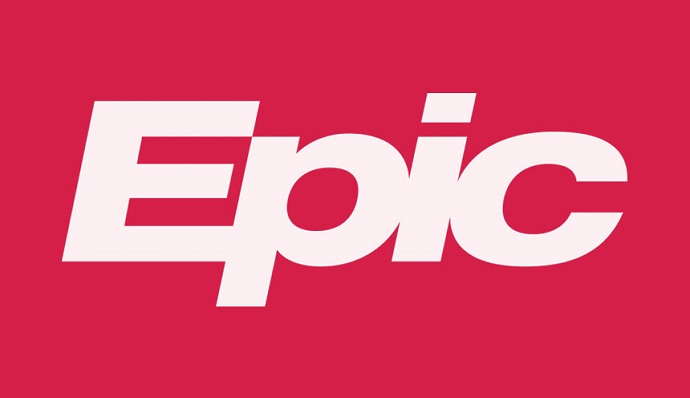Faulkner Guides Epic Systems from EHR to Comprehensive Health Record
At HIMSS18, Epic Systems founder and CEO Judy Faulkner shared her vision for a comprehensive health record and continued improvements to interoperability.

Source: Epic Systems
- Epic Systems founder and CEO Judy Faulkner has a reputation for big ideas.
And with some of the top health systems in the country among her customers and around two-thirds of patients owning a current Epic record, the company and its leader tend to have their sites set at scale.
Faulkner has dedicated decades to growing her company into a market mover that features prominently in any discussion of the health IT space, and her yearly presence at the annual HIMSS Conference and Exhibition punctuates how serious she is about bringing her big ideas not just to her own clients, but to the healthcare system at large.

Judy Faulkner, Founder and CEO of Epic Systems
Source: Epic SystemsMoving from paper charts to electronic health records has been a difficult enough leap for many, but Faulkner believes that her community of customers is ready for the next big shift in thinking: stepping up from the EHR to the CHR.
The “E” has become irrelevant, she asserted, reinforcing an idea that is guiding Epic towards increased interoperability, simplified workflows, and more open communication between disparate organizations.
It’s time to stop dwelling on the difference between paper and processing power and start reexamining how patient records look, feel, and function in the era of data-driven insights and value-based care, she stated.
“Saying ‘electronic health record’ is like saying you have an electronic iPhone,” Faulkner told HealthITAnalytics.com. “It’s no longer a meaningful distinction for the industry now that almost everyone is off of paper.”
“The comprehensive health record goes way beyond the 10 percent of care that physicians and hospitals directly contribute. It incorporates genomics, environmental data, family history, socioeconomics – all of the factors providers will be responsible for as they stop getting paid for the 10 percent and start earning money based on keeping the patient whole.”
Using the patient record to address the social determinants of health
The social determinants of health are top of mind for Faulkner, who has shifted away from playing defense and instead has started to strike a much more forward-looking tone.
“The social determinants have been largely missing from healthcare,” she said. “Understanding that loneliness, for example, has a 70 percent overlap with morbidity can change the way we look at individuals and what they need.”
“We’re going to try to use the tools we have to assess who we can help by creating a friendlier environment, especially for older people who might have lost their spouse, or don’t have any support system, or might not be able to cook for themselves or drive.”
Using health IT to better understand individuals and help patients overcome their personal challenges, such as smoking, will allow providers to see more success under value-based contracts, said Faulkner.
“Saying ‘electronic health record’ is like saying you have an electronic iPhone. It's no longer a meaningful distinction."
Achieving that goal will require vendors to extend their systems into places where they have not yet secured a foothold, she added.
“We need to help the patient understand which of their personal behaviors are not helping them. Our systems are even now being extended into those areas to bring data back and advice to the patient to make our care of them much more complete.”
Bringing the care continuum closer together through better data exchange is crucial for succeeding with population health initiatives, whether they are risk-based or not.
“When you bring a system like Epic into some of the places we need to be, such as a behavioral health program, you can allow those providers to add to the existing comprehensive record instead of creating new, fragmented records of care at different places,” she explained.
“Then you can share that information with providers at the patient’s care hub, whether that’s a hospital or a primary care provider. Interoperability is the key to that.”
“We could just wait, or we could do something”
Epic Systems hasn’t always enjoyed the best reputation when it comes to interoperability, and Faulkner has been keenly aware of that fact.
The company has endured some bruising PR body blows from competitors and lawmakers who have taken exception to Faulkner’s approach to sharing data.
The use of terms like “data blocking” has often been seen as a veiled reference to Epic’s exclusivity. Creating a closed community centered entirely on one vendor’s customers, no matter how seamlessly it could exchange data internally, is the opposite of meaningful interoperability, many stakeholders have argued.
Unsurprisingly, Faulkner vehemently disagrees.
“I know there are people who say that Epic is only focused on Epic. But when we first built the system in the early 2000s, well before meaningful use, we had to invent the whole thing,” she said.
“At the time, I talked to some people at HIMSS and asked if they were going to standardize the data so we could – I don’t think I even knew the word ‘interoperability’ yet – but I wanted to know if we could create some standards to exchange the data back and forth. The folks at HIMSS said we shouldn’t hold our breath.”
Epic had two choices, she continued. “We could just wait, or we could do something. We decided to do something.”
That “something” has evolved into a multifaceted platform that integrates a core EHR with patient-provided data, big data analytics, health information exchange capabilities, and integrated workflows allowing access to data from both internal and external customers.
“Just because there’s no standardization doesn’t mean we shouldn’t go ahead anyway,” said Faulkner.
“If we at least start doing what we can with what we have, it’s going to help millions of patients who are cared for using our software. Then other people can see it and join in when there are standards, and we will be more than happy to work alongside them, too.”
"I wanted to know if we could create some standards to exchange the data back and forth. The folks at HIMSS said we shouldn’t hold our breath.”
The Epic strategy has coalesced around three key components that contribute to creating the comprehensive health record.
“We’re treating everything as one system,” said Faulkner. “It’s the first step towards making one unified record for every patient. That’s what everyone has talked about, albeit in different ways.”
One system, one record, one happier patient
Announced in January, the three-pronged attack on data siloes and fragmentation starts with Coming Together, a feature that allows users to find and integrate patient records from other organizations – including those that do not use Epic.
“We can pull data from almost anywhere,” said Faulkner, “and we can allow our users to extend their systems into places that might not even have EHRs. All you need is an internet connect to use Epic Care Link, for example. It’s a web-based tool that allows other providers of the patient to schedule appointments, place orders, make referrals, and send data.”
Epic’s standards-based exchange tools, such as Care Everywhere, contribute to the movement of data across organizational lines, she added. “If it’s an Epic-to-Epic exchange, we can share 415 data elements. If it’s Epic to another vendor, we can exchange whatever people send us, but it’s typically much less.”
Avoiding data overload and cognitive fatigue when trying to synthesize information from multiple sources is the next step, said Faulkner.
“That’s where Happy Together comes in,” she said. “You only have a certain number of minutes for every appointment, and you simply can’t take the time to go somewhere else to see the data that you might need.
“Happy Together puts it all together as if it was from the same organization: here are all the test results and all the visits for the patient – but there’s a little symbol next to everything coming from the outside, and you can see where it’s coming from.”
The third piece of the puzzle, Working Together, furthers the goal of allowing providers to act in concert with one another.
“Working Together does things like let you see a thumbnail image from everywhere the images are available,” said Faulkner. “If you click on it, we go back to the original site where it was created, pull in a large image, and present it to you in that workflow. It’s reference quality right now – shortly we will have diagnostic quality.”
“You can also book appointments in another system, and message back and forth with that provider. Right now, when you get a referral to a specialist, you typically have to make the appointment or have that organization call you to make the appointment later. Now the referring provider can make it right away, which reduces a lot of pain points.”
Including the patient voice in the patient’s care
Striking the right balance between patient control and provider involvement in the comprehensive health record is a challenge, she acknowledged.
Empowering patients to make better decisions about their own health is a critical part of effective population health management and a key component of addressing the social determinants of health – and yet patients cannot be left on their own to manage something as important and extensive as their entire health data history.
“One patient record held by a patient isn’t going to work,” said Faulkner. “Patients are busy, and they’re not going to be able to update their records and manage all that information between the kids and their jobs and not feeling well.”
“You only have a certain number of minutes for every appointment, and you simply can’t take the time to go somewhere else to see the data that you might need."
“It’s not going to be good quality data if we leave it entirely to the individual. It needs to be curated and cared for by the health systems, but the patient needs to have as much input and control as possible.”
Integrating the patient voice into the record can be accomplished by treating the patient portal as an essential part of care and communication instead of an afterthought simply required to meet meaningful use.
Epic has expended a great deal of effort on making its MyChart patient portal a pillar of the patient-provider relationship. With new educational resources from the Mayo Clinic, a single instance of the portal for patients visiting multiple Epic sites, and a range of self-assessment tools available to help patient take charge, the app allows providers to accept significant patient-generated feedback.
“Patients can contribute a lot of the data we need about social determinants themselves,” said Faulkner. “That’s why we have questionnaires in MyChart that are automatically pulled into the record.”
“The patient often prefers doing it themselves rather than answering questions from a provider, because they can take their time and figure out how they want to answer and what they want to say.”
Such patient-generated health data will help providers fill in the gaps when it comes to socioeconomics, patient self-care capabilities, health literacy, and the availability of social and community support to promote healthy behaviors.
Armed with this information, providers will be better able to treat patients as comprehensively as their health IT systems are starting to do.
“As more and more data is being collected, there’s more and more we can think of to deliver the best possible care to everyone,” said Faulkner.
“And as we get past the basics of working with the software, then we can leverage it better. If you want to do that, you have to think about being comprehensive when you’re designing the tools you need to care for patients in a holistic way.”
